A few weeks ago with the government shutdown looming my buddy Eric and I set off on a weekend road trip from Colorado down into New Mexico. At the top of the list wa Capulin volcano and Las Vegas, New Mexico, where the film Red Dawn was shot back in the 80s. What I didn’t know about at the time was what became one of the highlights of the trip: Fort Union National Monument.
Now, if you’ve never heard of Fort Union, don’t feel bad. I hadn’t either and I have a frickin’ Ph.D. in American history. So maybe I can share with you a little bit of what I learned and the next time you’re in Albuquerque or Santa Fe (both nearby), you’ll make the trip.
If you google the site you’ll read that it was established as a frontier outpost in 1851. I’m always wary of statements like these because they’re soft words for hard power. An “outpost” like Fort Union served as a forward operating base for military efforts against the Indigenous people of the region, such as Comanche, Jicarilla Apache, Kiowa, Ute and a number of Pueblos. And these spaces are personal for me, as I work with all of the Tribes listed above on a daily basis. I generally love these folks and have a vested interest in seeing how their stories are told here, now, and in the future.
Our current Fort Union is actually the third of its kind, the first serving as a supply depot to other forts in the region before deteriorating and being reconstructed two other times to counter anticipated Confederate raids in the early 1860s.
Wait- what the heck were Confederate forces doing all the way out in New Mexico? This was supposed to be a war of North vs. South, right?
Wellllllllll it’s a bit more complicated that that. There’s some really good books out there that really broaden the American Civil War’s geography. Matt Karp’s This Vast Southern Empire shows how slaveholding elites envisioned a slaveholding republic past the Mississippi River and even the Rio Grande to Central and South America. Likewise, works by Ari Kelman and friend of the pod Megan Kate Nelson demonstrate the western expansion of the American Civil War to show how much land both parties aimed to conquer and subjugate.
The question now is how do we remember places like this? Fort Union falls under the purview of the National Park Service, established as a national monument in 1957. So arriving at the site, I was unsure as to what to expect. Like when I wrote about Capulin Volcano, parks like Yellowstone, Glacier, Yosemite and other places the President can’t pronounce tend to draw the most attention.1 However, the NPS stewards far more that the big parks, including spaces like Fort Union. This offers us the chance to reflect on the nation’s history, its evolution, and hopefully the opportunity to reflect what we’d like it to become.
The first thing you’ll notice upon arriving at the site is that a significant amount the post’s structure lays right next to the visitor’s center, which kind of sets the tone for the visit.
The center itself isn’t large—the NPS does in fact work to keep costs down—but it has a bang up museum inside with some really terrific displays. For me, one of the most impressive things about the site was how hard the National Park Service is clearly working to situate these spaces within the context of their Indigenous stewards. I was heartened to see the following immediately upon my arrival:
Plus, the museum did more than offer a simple land acknowledgement (universities take note), but it actually labored to tell the stories of Indigenous peoples and worked to ensure visitors understand that Native folks and people of Hispanic descent are still here today and remain integral to the story of America.
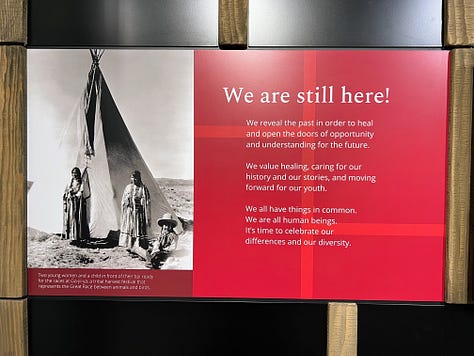
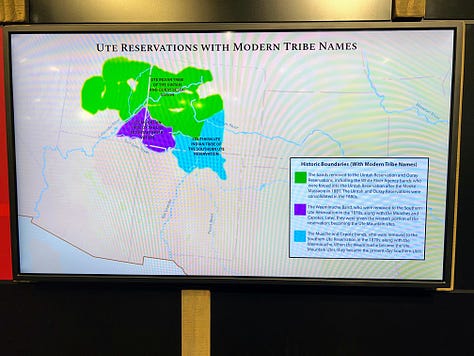
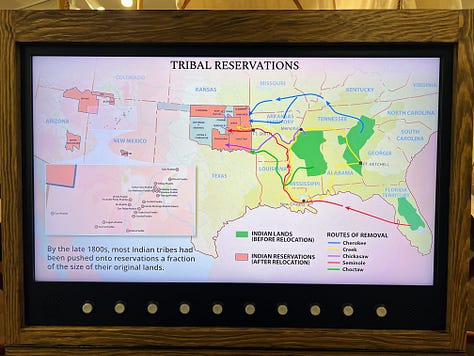
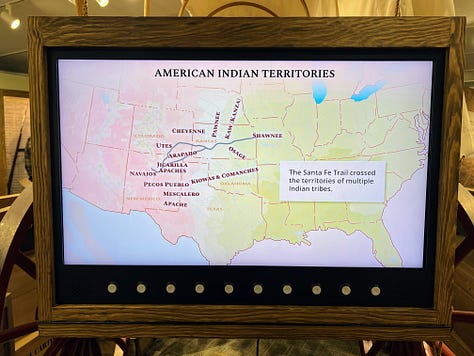
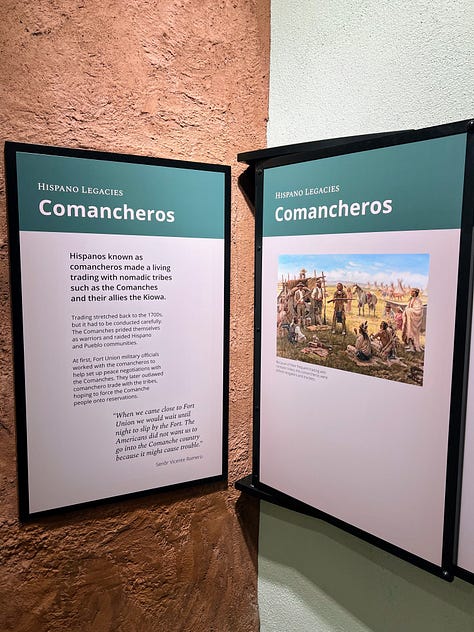
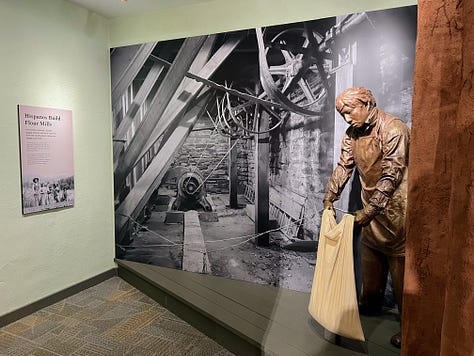
Outside is a different story. Like most of the architecture in New Mexico, the structures were made of adobe and in this case, plastered over. But as you can probably tell from the videos, New Mexico’s climate is hell on manmade objects. This leads to a question for NPS staff—what do you do? Do you repair it and try to keep it “new” or do you let it slowly fade and mark its passing? It’s a legitimate question and I think you can argue either way.
From what I can tell, the NPS decision here is the latter and I think it’s the right one. If you think about it, places like these are similar to the Greek Acropolis or any number of ruins. I think there’s an appreciation on different levels that comes with understanding that things are built, they wither, and they die. On occasion I’ll see a Greek statue that has its original paint and all that and it just looks…weird. In any case, I took some photos and videos here to show that this was more than a simple outpost; Fort Union was a full-on military base.
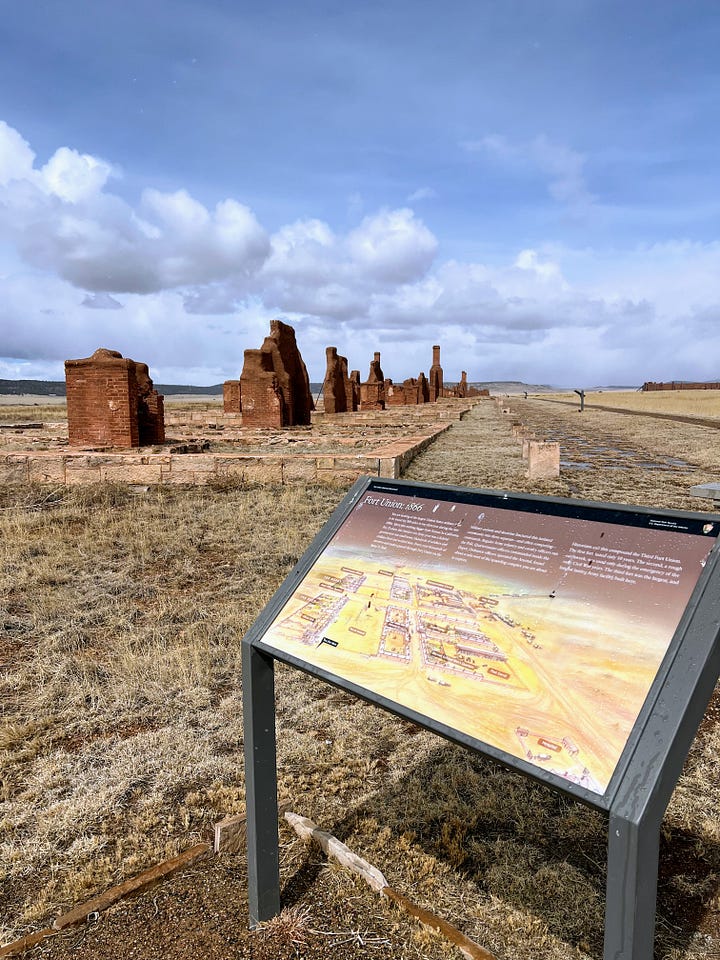

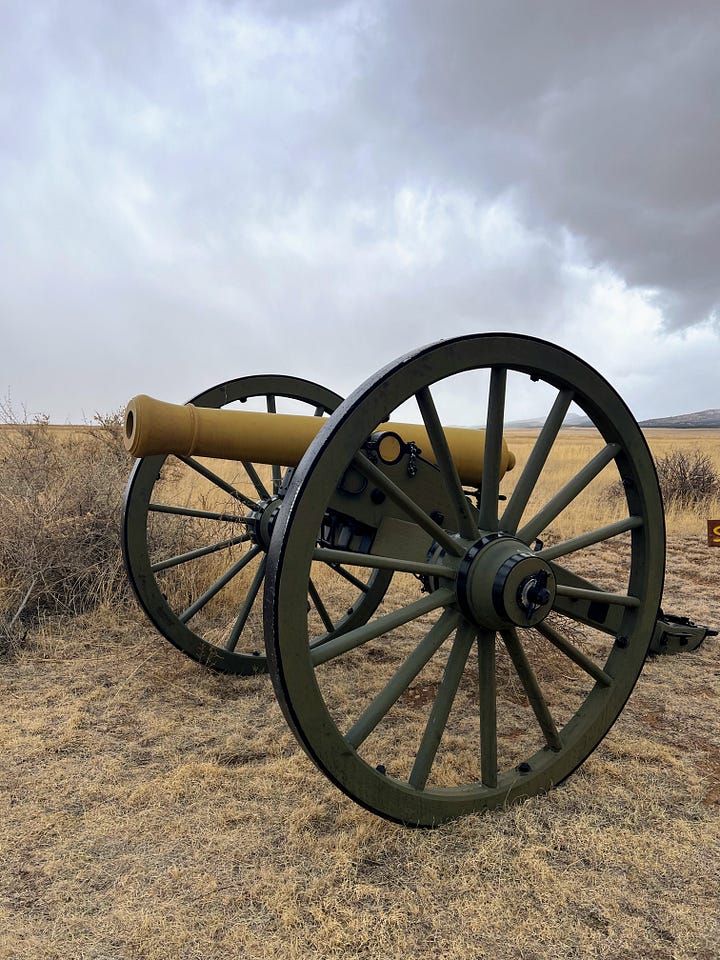
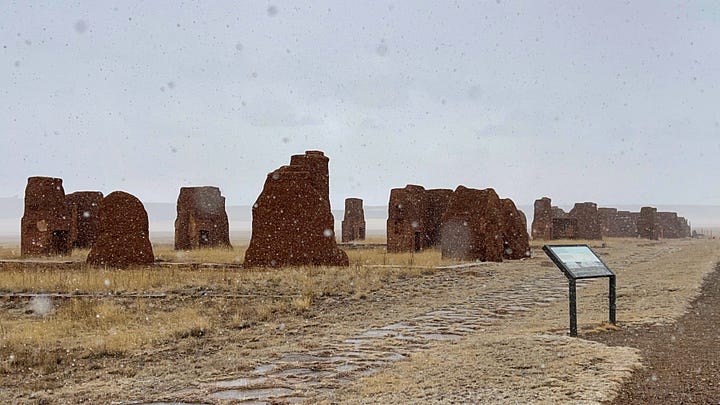
I think the question now in spite of President Trump’s recent Executive Order to restore “truth and sanity to American history” is what to do about places like Fort Union? What stories do we tell here? Fortunately, Cory Booker in his recent 25-hour speech gave us just the answer:
Our American history if it’s nothing else, American history, if it’s nothing else, it is a perpetual testimony to the achievement of impossible things against impossible odds. We are a nation that is great, not because the people that are trying to whitewash our history to remove great people, Native Americans, black people and women from our military websites. I don’t want a Disneyfication of our history. I don’t want to whitewash history. I don’t want to homogenize history. Tell me the wretched truth about America, because that speaks to our greatness.2
To me, these spaces have to be protected because they belong to everyone. The good, the bad, and the ugly. All of these stories created who we are and help guide what we become next.
As I wrote this, news broke of Val Kilmer’s passing at the age of 65. I’m exhausted tonight but I cannot help but think about the man who really colored much of my childhood in the 80s through films like Real Genius, Top Gun, and Willow. Kilmer’s life and career deserve more of an homage than I can offer tonight, but he’ll be missed, and sorely at that. I’m still deciding on what film we’ll watch on the Sunday night watch party on Blue Sky, but I assure you, it will be one of his movies.
-Jason
UPDATE- I tossed and turned on this last night. I nearly chose Real Genius but Val’s best loved performance is in Tombstone. We typically don’t do films more than once so I can’t think of honoring him in our own little way more than him being the reason that film joins the pantheon. So join us on Sunday, April 6 at 8pm eastern to watch Tombstone, available on Hulu or wherever you get your films.
Hey thanks for being here. If you want to help to create more content, more voices, and keep up the fight, consider upgrading to a paid subscription. Thank you for being part of this community.
https://www.usatoday.com/story/news/politics/2020/08/04/trump-mispronounces-yosemite-white-house-event/3289122001/
https://deadline.com/2025/04/cory-booker-speech-disney-1236356434/




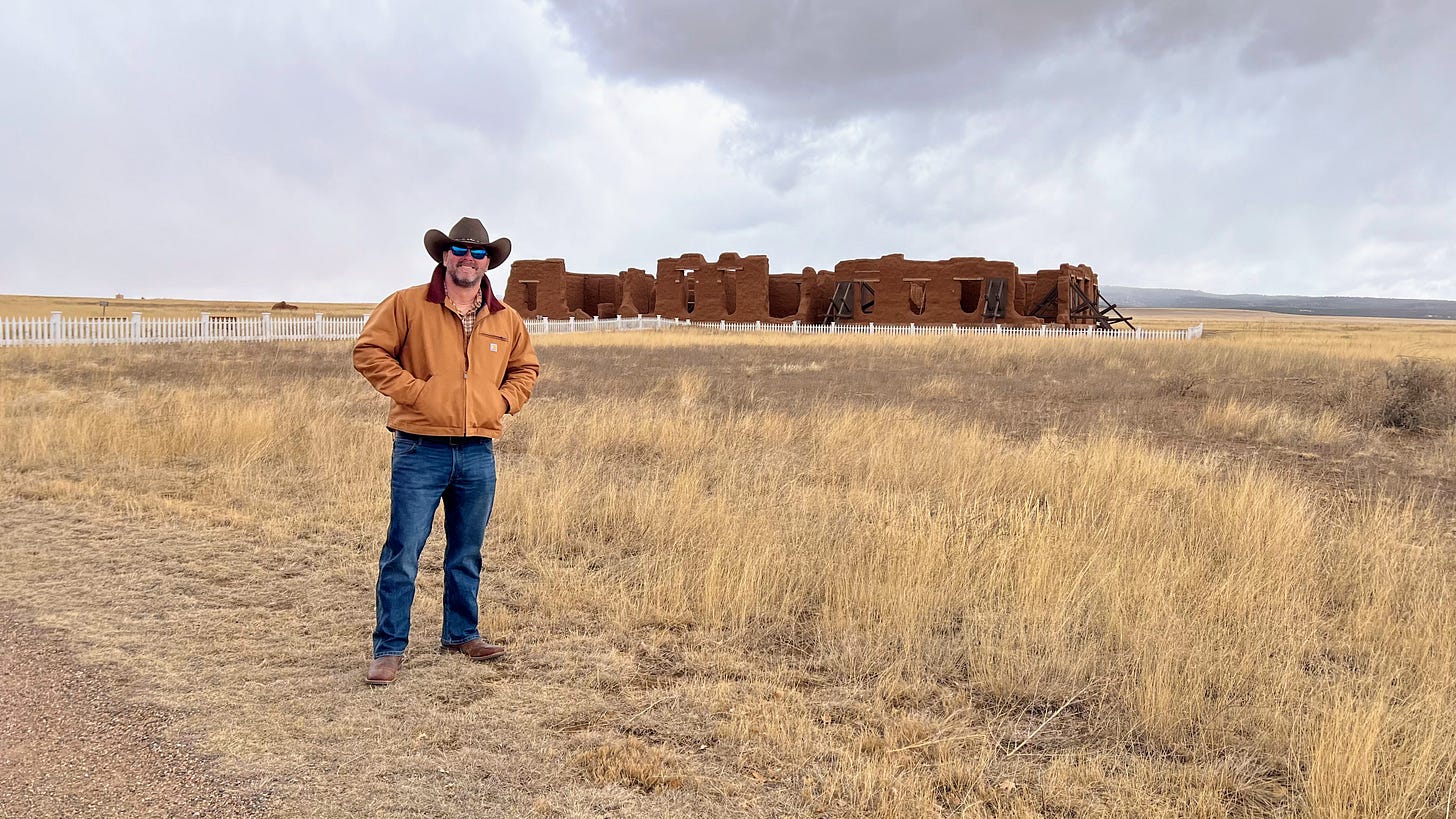


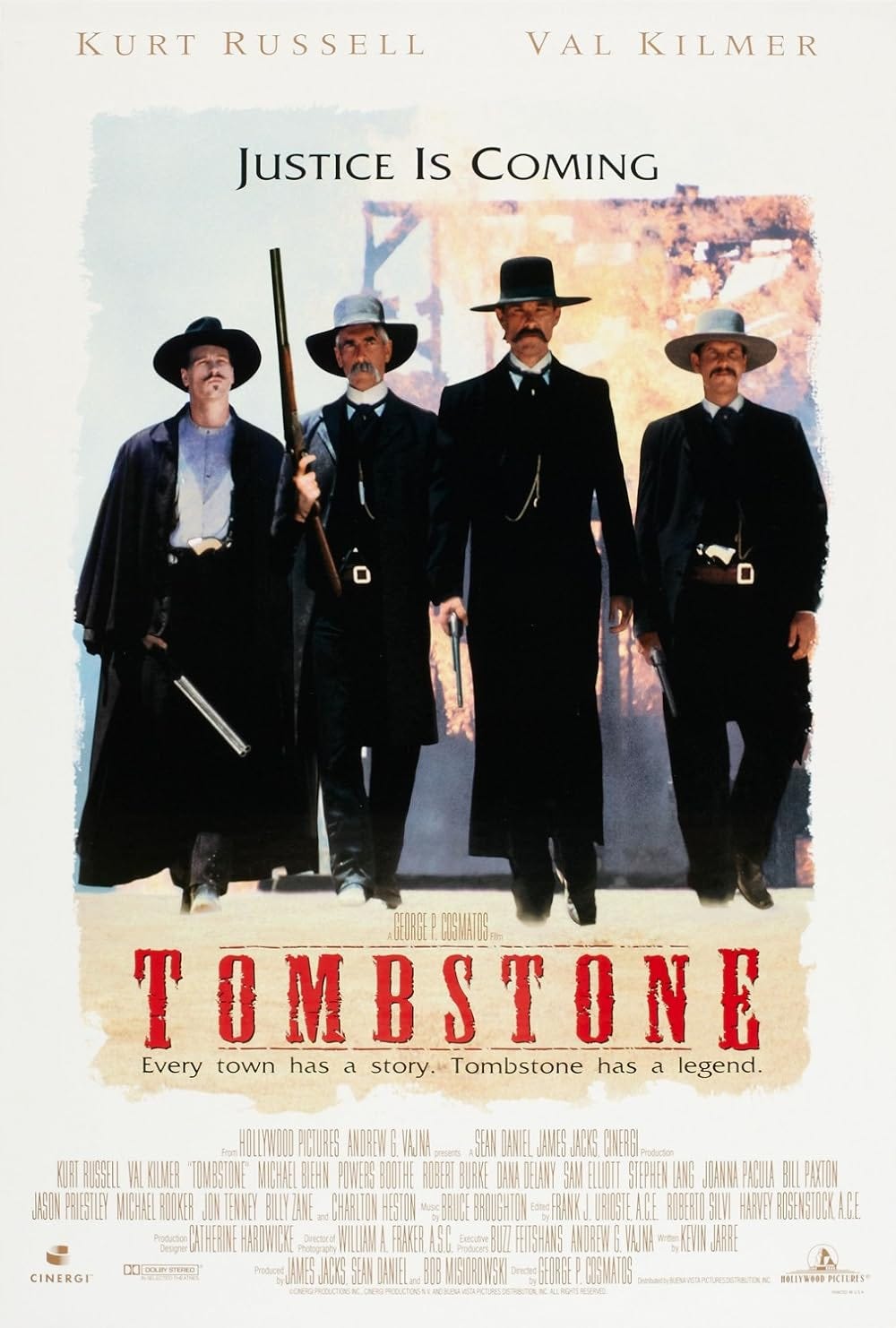
Incredible insights. Brilliant work. I’m subscribing.
Love Ft Union - did they show you the aerial photo showing Santa Fe trail ruts on both sides of the Fort, and the actual remaining ruts? And if you go ½ hour further south on I-25 you get to Las Vegas NM - GREAT historical and quirky city with huge movie-making history going back to Tom Mix - "Film is nothing new to Las Vegas. Our rural community has been the host to a number of productions starting with early silent westerns (1913-1915) starring the actor/writer/director, Tom Mix, as well as Easy Rider (1969), Red Dawn (1984), Speechless (1994), All the Pretty Horses (2000), Astronaut Farmer (2006), Academy Award-winning No Country for Old Men (2007), multi-Emmy-award-nominated film Georgia O’Keeffe (2009), Due Date (2010), and A&E’s Longmire (2011-13), among many others."